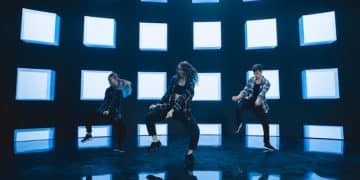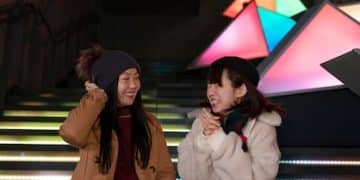Decoding K-Pop Music Videos: Symbolism and Hidden Meanings
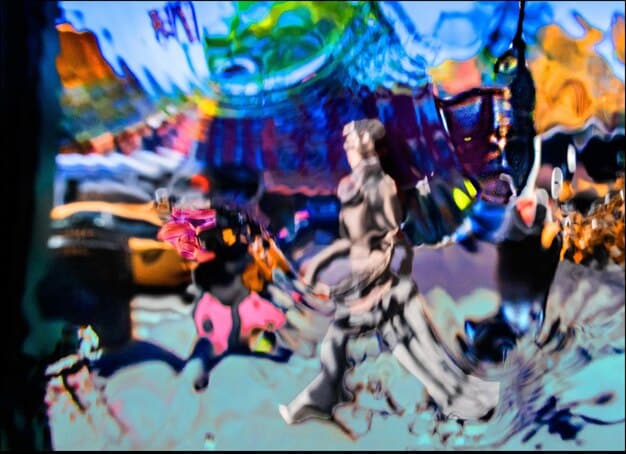
K-Pop music videos are a powerful medium blending music with visual storytelling, often packed with symbolism and hidden meanings that enrich the viewing experience and spark fan interpretations.
Delving into the vibrant world of K-Pop, we find that music videos are more than just visual accompaniments; they are intricate narratives woven with symbolism and hidden meanings. This K-Pop music video analysis aims to decode these layers, offering a fresh perspective on recent releases.
The Rise of Visual Storytelling in K-Pop
K-Pop has evolved significantly, with music videos becoming a defining element. They are no longer just promotional tools but integral parts of the artistic expression, often laden with visual narratives and symbolic elements.
Evolution of K-Pop Music Videos
From simple performances to cinematic masterpieces, K-Pop music videos have undergone a dramatic transformation. This evolution reflects the increasing importance of visuals in captivating audiences and conveying complex messages.
- Early K-Pop MVs focused on basic performances and showcasing the artists’ visuals.
- The rise of cinematic narratives brought intricate storylines and character development.
- Symbolism and allegory became increasingly prevalent, adding layers of depth to the videos.
- Modern K-Pop MVs often incorporate cutting-edge technology and special effects.
The shift towards elaborate storytelling has turned K-Pop music videos into a unique art form, eagerly anticipated and dissected by fans worldwide.
Cultural and Historical References
K-Pop music videos frequently draw inspiration from diverse cultural and historical sources. These references add depth and complexity, inviting viewers to engage on a more profound intellectual level.
Ancient Mythology and Folklore
Many K-Pop groups incorporate elements from ancient mythology and folklore into their music videos, often reinterpreting classic tales in a modern context.
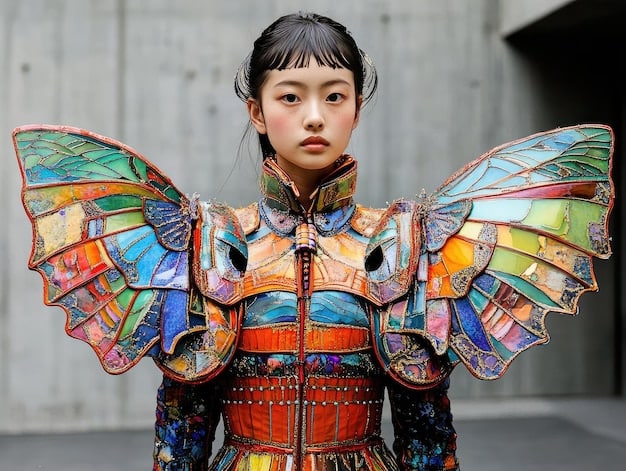
By referencing these narratives, artists can tap into universal themes and emotions, resonating with a global audience while celebrating their cultural heritage.
Symbolism in Set Design and Costumes
The set design and costumes in K-Pop music videos are often rich in symbolism, carefully chosen to enhance the storytelling and evoke specific emotions.
- Colors can represent different emotions or concepts, such as red for passion or blue for sadness.
- Architectural elements might symbolize power, confinement, or spiritual enlightenment.
- Clothing can reflect the character’s role, social status, or inner turmoil.
- Props and accessories frequently carry symbolic weight, revealing deeper layers of meaning.
Analyzing these visual cues allows viewers to gain a deeper appreciation for the artistry and attention to detail in K-Pop productions.
In summary, cultural and historical references enrich K-Pop music videos, creating a tapestry of meaning that captivates and challenges audiences.
Decoding Recurring Themes and Motifs
Certain themes and motifs appear repeatedly in K-Pop music videos, creating a shared visual language within the genre. Recognizing these recurring elements can enhance our understanding of the artists’ messages and intentions.
Water as a Symbol of Transformation
Water is a versatile symbol in K-Pop, often representing purification, rebirth, and emotional turbulence. Scenes involving water can signify a character’s journey towards self-discovery or emotional healing.
The use of water can range from subtle imagery, such as raindrops falling on a window, to dramatic scenes of characters submerged in water, signifying a profound transformation.
The Significance of Mirrors and Reflections
Mirrors and reflections are frequently used to explore themes of identity, duality, and self-perception. They can represent the character’s inner struggles or their relationship with their public image.
- A character looking into a mirror might be confronting their inner demons.
- Reflections can symbolize the dichotomy between the artist’s public persona and their private self.
- Distorted reflections can represent fractured identity or emotional instability.
- Breaking a mirror can signify a rejection of societal expectations or a desire for change.
Understanding the symbolism behind mirrors and reflections adds another layer of depth to our interpretation of K-Pop music videos.
By recognizing recurring themes and motifs, viewers can gain a deeper understanding of the complex narratives woven into K-Pop music videos.
The Impact of Color Psychology
Color psychology plays a crucial role in shaping the emotional impact of K-Pop music videos. Each color evokes specific feelings and associations, carefully chosen to enhance the storytelling and create a distinct visual atmosphere.
Red: Passion, Danger, and Transformation
Red is a powerful color associated with passion, danger, and transformation. It can represent intense emotions, such as love, anger, or rebellion.
The effective use of red hues enhances the video’s impact and emotional resonance, guiding the viewer’s perception of the narrative.
Blue: Serenity, Sadness, and Reflection
In contrast to red, blue typically represents serenity, sadness, and reflection. It can evoke feelings of calm, peace, or melancholy depending on the context.
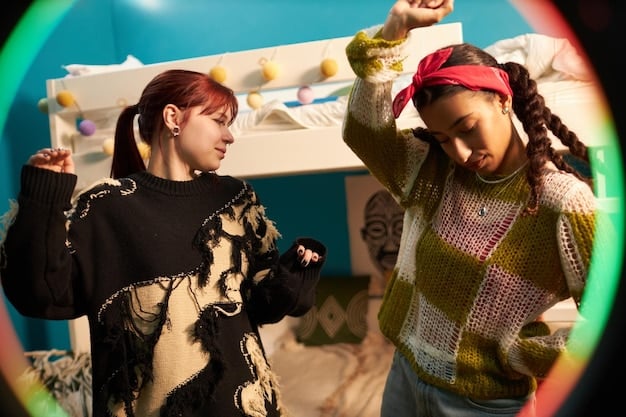
The interplay between different shades of blue contributes to the overall emotional complexity, inviting viewers to connect with the artist’s vulnerability.
Color psychology is a powerful tool in creating visual narratives that resonate with viewers on a deep emotional level.
Analyzing Choreography and Body Language
Choreography and body language are integral components of K-Pop music videos, conveying emotions, relationships, and power dynamics. Analyzing these elements can reveal hidden layers of meaning and enhance our understanding of the narrative.
Synchronized Movements and Group Dynamics
Synchronized movements are a hallmark of K-Pop choreography, representing unity, cooperation, and precision. They highlight the group’s teamwork and collective identity.
Variations in synchronized movements can also convey subtle messages, such as changes in leadership or internal conflicts within the group.
Individual Expressions and Emotional Communication
In addition to synchronized movements, individual expressions and gestures play a crucial role in communicating emotions and character development. Facial expressions, hand gestures, and body postures can reveal the character’s inner thoughts and feelings.
- Eye contact (or lack thereof) can indicate attraction, aversion, or power imbalances.
- Hand gestures can express a range of emotions, from joy and excitement to fear and anger.
- Body posture can convey confidence, vulnerability, or defiance.
- Subtle shifts in body language can signal changes in the character’s emotional state.
By paying attention to these non-verbal cues, viewers can gain a deeper understanding of the characters’ motivations and relationships.
The choreography and body language contribute significantly to the storytelling, offering insights into the characters’ emotions and dynamics.
The Influence of Art Direction and Cinematography
Art direction and cinematography are essential elements in creating visually stunning and emotionally resonant K-Pop music videos. The choices made by the director and production team can significantly impact the overall message and artistic impact of the video.
Composition and Framing
The composition and framing of shots can influence the viewer’s attention and create a sense of balance, tension, or unease. Different camera angles and perspectives can convey different emotions and power dynamics.
Careful consideration of composition and framing elevates the music video from simple entertainment to a work of art.
Lighting and Shadows
Lighting and shadows are used to create mood, highlight key elements, and guide the viewer’s eye. Dramatic lighting can enhance the emotional impact of a scene, while subtle lighting can create a sense of intimacy or mystery.
- Bright, cheerful lighting can evoke feelings of happiness and optimism.
- Dark, shadowy lighting can create a sense of suspense or foreboding.
- Backlighting can create a dramatic silhouette, emphasizing the character’s form.
- Colored lighting can enhance the emotional impact of a scene and reinforce thematic elements.
The skillful manipulation of light and shadow is crucial in shaping the visual narrative and creating a distinct atmosphere.
From composition to lighting, the art direction and cinematography work together to create a memorable viewing experience.
| Key Element | Brief Description |
|---|---|
| 🎵 Music Genre | K-Pop is a vibrant and influential genre known for its catchy melodies and energetic performances. |
| 🎬 Visual Storytelling | K-Pop music videos use diverse cultural references and artful symbolism to create intricate narratives. |
| 🎨 Symbolism | Recurring themes like water, mirrors, and color psychology enhance the video narratives. |
| 💃 Choreography | Choreography and Body language convey the artists relationship, power dynamics and emotions. |
FAQ
▼
K-Pop music videos stand out due to their high production value, intricate storytelling, and incorporation of diverse cultural references and symbolism.
▼
Symbolism adds depth and complexity to the narratives, allowing artists to convey deeper meanings and connect with audiences on an intellectual level.
▼
Color psychology shapes the emotional impact of the videos, influencing the viewer’s perceptions and enhancing the storytelling through strategic color usage.
▼
Choreography communicates relationships, emotions, and power dynamics, offering insights into the characters’ motivations and enhancing the overall narrative.
▼
Art direction and cinematography create visually stunning visuals, enhancing the emotional impact and contributing to the overall artistic impression of the music video.
Conclusion
By decoding the symbolism and hidden meanings in the latest releases, we can gain a deeper appreciation for the artistry and complexity of K-Pop music videos. They offer a rich tapestry of visual storytelling, inviting viewers to engage on multiple levels and explore the depths of human emotion and cultural expression.

